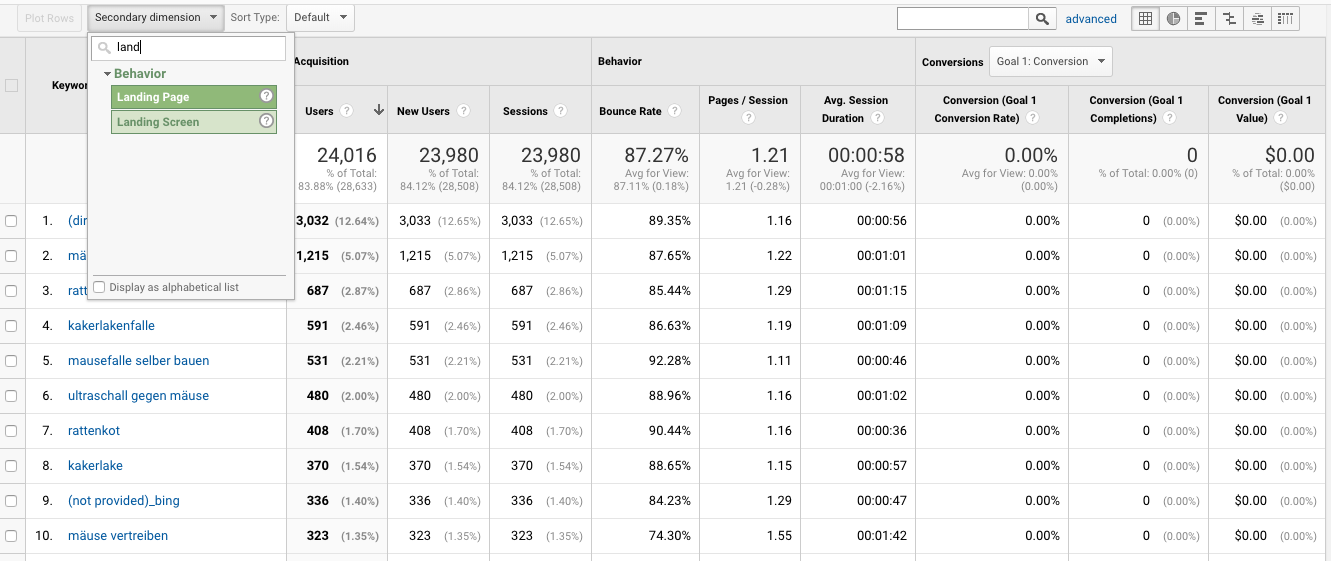Optimizing Data Analysis: Google Analytics Secondary Dimension Explained
Optimizing Data Analysis: Google Analytics Secondary Dimension Explained
Blog Article
Unlocking the Power of Second Measurement Analytics for Boosted Data Insights and Decision-Making
In the world of information analytics, main dimensions typically take the limelight, but truth depth of insights lies within the realm of second dimensions. These additional data points supply a nuanced perspective that can brighten patterns and partnerships not readily evident initially look. By harnessing the power of additional measurement analytics, organizations can introduce covert patterns, uncover relationships, and essence much more significant verdicts from their data. The possibility for improved decision-making through the usage of these additional measurements is large, promising a much deeper understanding of intricate data collections and leading the method for more informed strategic choices.
Importance of Secondary Measurements
Checking out the importance of secondary dimensions in analytics unveils the covert layers of data insights important for notified decision-making in different domains. Second measurements provide a much deeper understanding of primary information by offering extra context and viewpoints. By integrating additional dimensions into analytics, organizations can draw out extra thorough and nuanced insights from their datasets.
One trick importance of secondary measurements is their capability to section and categorize key data, permitting an extra comprehensive evaluation of particular parts within a dataset. When looking at the information as a whole, this division enables services to recognize patterns, fads, and outliers that could not be obvious. Secondary dimensions help in uncovering connections and dependencies in between different variables, leading to even more precise forecasting and predictive modeling - secondary dimension.
In addition, secondary measurements play a critical function in boosting data visualization and coverage. By adding additional measurements to visualizations, such as graphs or graphes, experts can produce much more informative and insightful depictions of information, assisting in better interaction of searchings for to stakeholders. Generally, the integration of second measurements in analytics is important in unlocking the full potential of information and driving evidence-based decision-making.
Trick Advantages of Making Use Of Second Measurements
Using second dimensions in analytics uses companies a tactical benefit by augmenting the depth and granularity of data insights. By exploring data making use of secondary dimensions such as time, area, tool kind, or user demographics, companies can discover patterns, trends, and relationships that might or else remain hidden.
Furthermore, the usage of additional dimensions boosts the context in which main information is analyzed. By leveraging second measurements in analytics, organizations can harness the full capacity of their information to drive far better decision-making and attain their organization purposes.
Advanced Information Evaluation Methods
A deep dive right into sophisticated information analysis methods discloses innovative approaches for drawing out useful insights from intricate datasets. One such technique is machine navigate here knowing, where formulas are utilized to determine patterns within information, anticipate results, and make data-driven choices. This technique enables the automation of logical version structure, allowing the handling of big quantities of data at a quicker rate than conventional methods.
An additional sophisticated method is predictive analytics, which utilizes analytical formulas and machine learning techniques to forecast future results based upon historic data. By assessing fads and patterns, organizations can expect client habits, market patterns, and prospective risks, empowering them to make proactive decisions.
Additionally, text mining and sentiment analysis are useful methods for extracting insights from disorganized data resources such as social media sites remarks, consumer testimonials, and survey reactions. By evaluating message data, organizations can understand customer point of views, identify arising trends, and enhance their service or products based on comments.
Enhancing Decision-Making Through Secondary Measurements

Enhancing decision-making through additional measurements makes it possible for services to make more educated and targeted tactical choices. By segmenting consumer data based on additional dimensions like acquiring history or involvement levels, Visit Website business can customize their marketing methods to particular target market sections, leading to boosted conversion rates and customer complete satisfaction. Second dimensions can help recognize connections and partnerships between different variables, enabling companies to make data-driven choices that drive development and profitability.
Carrying Out Additional Dimension Analytics
When including second dimensions in analytics, companies can open much deeper understandings that drive critical decision-making and boost total performance. This requires comprehending the certain inquiries the company seeks to respond to and the data points required to address them.

Moreover, companies must take advantage of advanced analytics tools and technologies to streamline the procedure of integrating additional measurements. These tools can automate data processing, evaluation, and visualization, allowing companies to concentrate on interpreting understandings instead than hands-on data control.
Conclusion
In verdict, second measurement analytics play a crucial role in enhancing data insights and decision-making procedures. By using sophisticated data analysis techniques and carrying out additional measurements properly, organizations can open the power of their information to drive strategic business choices.
In the world of data analytics, key dimensions often take the limelight, but the real depth of understandings lies within the world of additional dimensions.Making use of second measurements in analytics provides organizations a strategic advantage by increasing the depth and granularity of data insights. By leveraging secondary dimensions in analytics, companies can harness the full possibility of their data to drive much better decision-making and achieve their service goals.
Carrying out data validation processes and routine audits can assist preserve data quality and integrity.
By making use of advanced data evaluation strategies and implementing additional measurements efficiently, companies can unlock you can try here the power of their data to drive tactical service choices.
Report this page